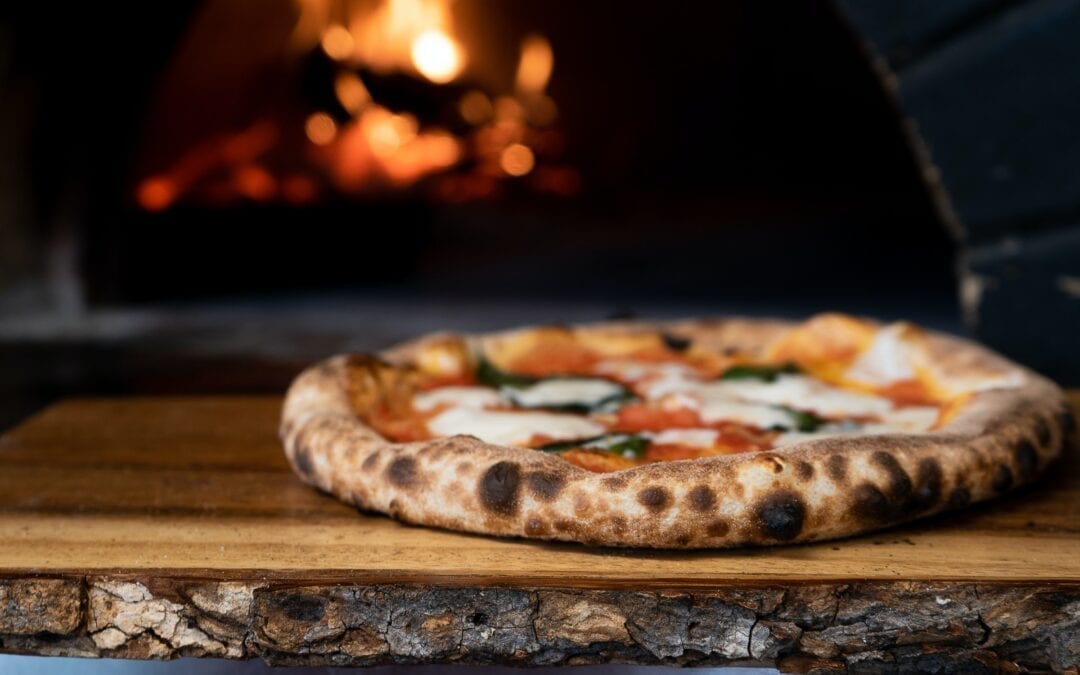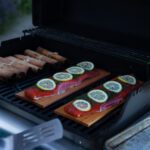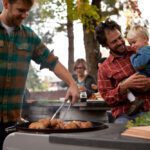I was gifted an Ooni pellet-fueled pizza oven as a housewarming present from my sister, and it has quickly become an obsession. In the past I’ve made pizzas in the oven, or on a pizza peel on my Weber charcoal grill (which worked great!) but now that I’ve gotten hooked on wood fired pizza making in my own backyard there’s no turning back.
There is a bit of a learning curve with pellet fueled pizza ovens, and I’ve definitely learned a lot – and eaten a lot of delicious pizza! Here’s my biggest tips and tricks for getting started on your own pizza making quest.
Bring your dough to room temperature
Whether I’m making my favorite pizza dough from scratch or grabbing a ready made ball of dough from the grocery store (I don’t judge, I do both depending on how much time I have) I always make sure the dough is sitting out at room temperature for an hour or two. If the dough is hard to work with and springs back when you shape it, giving it a little more time to warm up will help.
Invest in a temperature gun
My pizza oven easily reaches over 1000˚ F, but I’ve found the sweet spot where the bottom of the crust is perfectly cooked and the cheese is melted is right around 800˚ F.
Experiment and see what works best for your oven, I’ve found higher and lower temperatures resulted in the pizza toppings cooking while the dough is still a little uncooked or a burnt crust bottom. A temperature gun will make a big difference when it comes to consistently turning out well-cooked pizzas. Make sure you get one that reaches at least 1000˚ F.
Corn meal is your friend
When you are shaping your pizza dough, make sure your surface is heavily covered with corn meal to help make the transfer from countertop to pizza oven seamless. You really can’t overdo it here – if your rolled out pizza crust isn’t easily gliding across the countertop, fix the problem by adding more corn meal to the underside of the crust or re-shaping your dough now before it’s too late!
Don’t skip the peel
After months of making do without, I finally got a metal pizza peel and it has made pizza-making life much easier. The transfer of the pizza from the countertop to oven and the rotating of the pizza while it’s in the oven are arguably the most difficult parts of the process, so making it a bit easier with a thin metal peel and a long wooden handle is definitely worth it. Hot tip: make sure you buy a peel that fits all the way inside your pizza oven.
Choose your pellets carefully
In a pellet fueled pizza oven, the pellets are both creating the intense heat and imparting a subtle wood-charred flavor. Our pellets are a delicious blend of maple, cherry, and hickory hardwoods, with no filler wood. And of course they’re sustainably sourced with no additives.
Light on toppings
Deep dish pizza is delicious, but this is not that! Keep the topping load on the lighter side, as a pizza that is overloaded with toppings will be difficult to move to the pizza oven and may keep your cheese from melting by the time your crust is perfectly cooked.
Consider your toppings
Most toppings that you’d put on a conventional oven-baked pizza will work great in your pizza oven, but there are a few items you should be careful with. Anything that is both very dry and thinly sliced risks burning. I’ve had trouble with sun dried tomatoes and very thinly sliced red onion, which both burned by the time the rest of my pizza finished cooking. Sun dried tomatoes that come in a jar of oil and thicker pieces of onion work great.
Don’t get distracted
These pizzas cook quickly, this is not the time for glancing at Instagram! I aim to rotate the pizza every 20 seconds, and find 90 seconds is usually enough total cooking time, though I judge the final done-ness by appearance on a case by case basis.
Keep the hopper filled
This will happen naturally over time, but get to know your pizza oven. My Ooni takes about 15 minutes to heat up, and I know one hopper full of pellets will be enough heat to last about 15 minutes. If I’m cooking more pizzas than I can finish in that time I’ll need to refill the hopper before the oven cools down.
Practice makes perfect
Come to terms with the fact that you will burn some pizzas, and that’s okay! Homemade pizza is so delicious that even your practice pizzas will be better than something you get from a restaurant. If I’m hosting friends or family I like to have one extra dough on hand, so I know if one pizza goes terribly awry, we’ll still have plenty to work with.
Hello Everybody! Annie here. When I’m not making delicious pizzas, you can find me working as Wildwood’s Head Design Manager.






